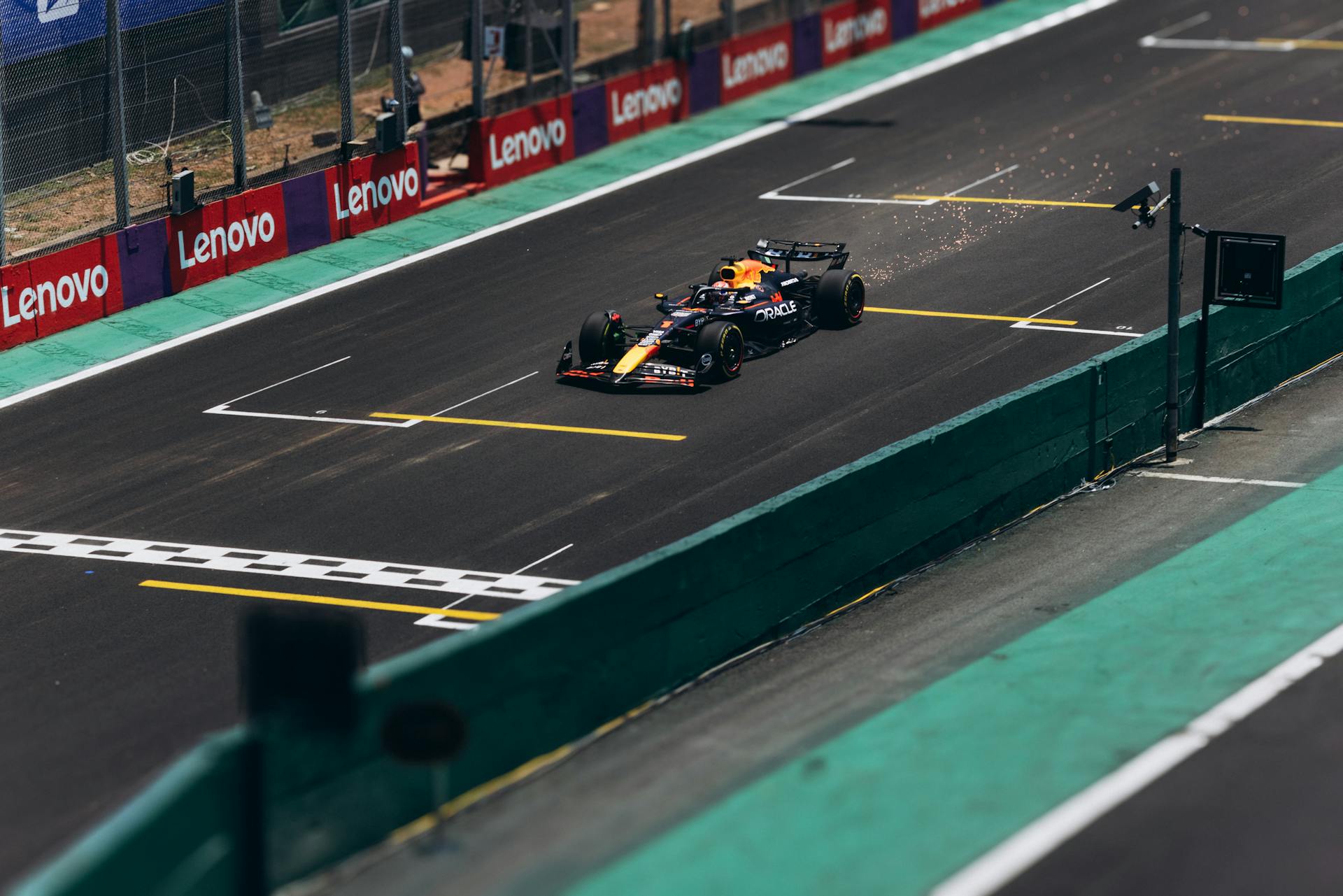The 2025 Emilia Romagna Grand Prix at Imola delivered drama, strategy twists, and a masterful performance from Max Verstappen – but it may have also marked the end of an era for one of Formula 1’s most historic venues.
A Bittersweet Victory
Max Verstappen claimed his fourth consecutive victory at the legendary Autodromo Enzo e Dino Ferrari, reducing the championship gap to the McLaren duo to just 15-16 points in what could be a pivotal moment in the season. The Red Bull driver’s triumph was all the more impressive given that his car didn’t appear to have the pace advantage during practice sessions and qualifying.
Starting from second on the grid, less than a tenth of a second off pole position, Verstappen executed a perfect opening lap overtake on Oscar Piastri and never looked back. His ability to manage the race in clean air while preserving his tires showcased exactly why he remains Formula 1’s benchmark driver, even when his machinery isn’t the fastest on track.
The Imola Controversy: Racing Heritage vs. Commercial Reality
Perhaps the most significant story emerging from this weekend isn’t what happened on track, but what might happen off it. Imola’s contract expires at the end of this season, and whispers in the paddock suggest this could be the circuit’s final Formula 1 appearance – at least for the foreseeable future.
The arguments against Imola are familiar: the track is too narrow for modern Formula 1 cars, overtaking opportunities are limited, and the circuit struggles to produce the wheel-to-wheel action that modern audiences demand. Yet this weekend’s race countered many of those criticisms, delivering entertaining racing thanks to Pirelli’s experimental tire compounds and well-timed safety car interventions.
The commercial reality is harsh but clear – Formula 1’s expansion into new markets, particularly in the United States, is making it difficult to justify hosting two races in Italy. While both Monza and Imola carry immense historical significance, Imola appears more vulnerable to the axe.
Strategic Complexity and Tire Experiments
This weekend marked Pirelli’s first experiment with non-sequential tire compounds, introducing larger gaps between compound hardness levels. What teams initially planned as one-stop strategies quickly evolved into two-stop races as tires degraded faster than anticipated, creating the kind of strategic complexity that makes Formula 1 compelling.
Verstappen benefited from fortuitous timing when a safety car appeared just after Lando Norris had pitted, gifting the Dutchman crucial track position and ultimately a six-second victory margin despite the field being bunched up behind the safety car.
McLaren’s Team Dynamic Under Scrutiny
The race also highlighted the delicate balance McLaren must maintain between their two championship contenders. With Oscar Piastri on fresher tires behind Lando Norris during the crucial safety car restart, the team faced questions about potential team orders – dubbed “papaya rules” in the paddock.
McLaren chose to let their drivers race, a decision that may have cost them time in the pursuit of Verstappen but preserved team harmony. With both drivers still mathematically in championship contention, these strategic decisions will become increasingly critical as the season progresses.
Williams Rising, Ferrari Struggling
Away from the championship battle, Williams continued their impressive resurgence with Alexander Albon securing his second consecutive top-five finish. The Anglo-Thai driver was even challenging for podium positions at various stages, demonstrating that Williams has developed a genuinely competitive package.
Conversely, Ferrari endured a disappointing home race weekend. After both cars were knocked out in Q2 during qualifying – a shocking result at one of their home circuits – Lewis Hamilton and Charles Leclerc could only manage fourth and sixth places respectively. The Scuderia’s struggles are particularly concerning given their strong end to the 2024 season and the high expectations for their 2025 campaign.
Irish Motor Racing on the Rise
Beyond Formula 1, the weekend provided reasons for Irish motorsport fans to celebrate. Alex Dunne claimed victory in the Formula 2 feature race, his second win in three races, and now leads the championship standings. The McLaren development driver’s rise through the junior categories has been impressive, and his recent Formula 1 test at Zandvoort suggests bigger opportunities may be on the horizon.
Dunne joins an exclusive group of Irish drivers to have reached Formula 1’s feeder series, following in the footsteps of legends like Eddie Irvine and Tommy Byrne. With McLaren’s backing and his current form, a Formula 1 practice session appearance later this season wouldn’t be surprising.
Looking Ahead: Monaco and the Triple Header
The championship battle now heads to Monaco for the sport’s most prestigious race weekend. The principality will implement a mandatory two-stop strategy this year, attempting to add strategic complexity to a circuit where track position is typically paramount.
Monaco’s qualifying session remains one of the most thrilling spectacles in motorsport, with drivers threading their cars between barriers with millimeters to spare. Charles Leclerc will be defending his 2024 victory on home soil, while Verstappen will be looking to continue his momentum in the championship fight.
The Broader Picture
As Formula 1 continues its global expansion, weekends like Imola remind us what might be lost in the pursuit of new markets and commercial opportunities. The circuit may not produce the most overtaking, but it challenges drivers in unique ways and carries decades of racing heritage.
Whether this was truly Imola’s Formula 1 farewell remains to be seen, but Verstappen’s commanding victory provided a fitting tribute to a circuit that has witnessed some of the sport’s most memorable moments. As the championship battle intensifies and the calendar evolves, preserving motorsport’s historical roots while embracing its commercial future remains Formula 1’s greatest balancing act.


Leave a Reply